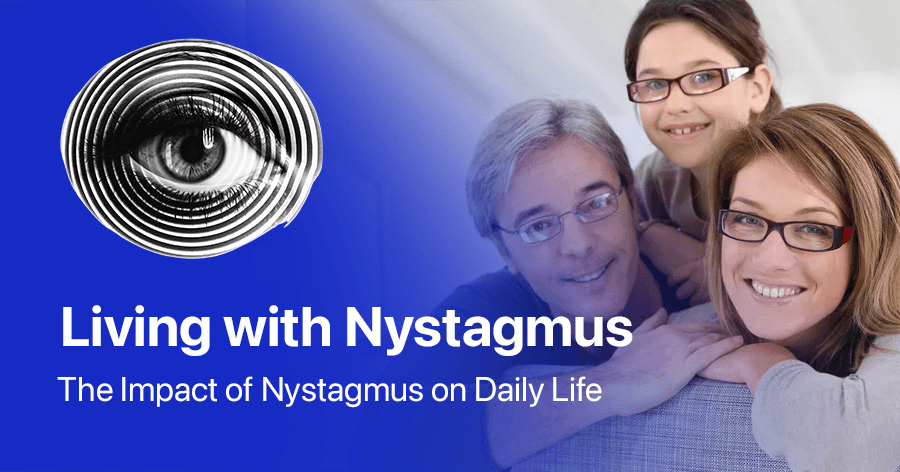
Living with Nystagmus? The Impact of Nystagmus on Daily Life
Living with nystagmus presents a unique set of challenges that affect various aspects of daily life. As an ophthalmologist with over two decades of experience studying this condition, I’ve witnessed firsthand how individuals with nystagmus navigate their world. Nystagmus, characterized by involuntary eye movements, influences not just vision but also impacts work, driving, social interactions, and emotional well-being. In this article, we’ll explore the multifaceted nature of living with nystagmus and discuss practical strategies to enhance quality of life for those managing this condition. Whether you’re personally affected by nystagmus or supporting someone who is, understanding these impacts and learning adaptive techniques can make a significant difference in day-to-day experiences. Let’s delve into the realities of life with nystagmus and discover how to thrive despite its challenges.
As an ophthalmologist who has dedicated over two decades to studying nystagmus, I’ve seen firsthand how this condition affects people’s lives. Nystagmus, characterized by involuntary eye movements, presents unique challenges that extend far beyond vision alone. In this article, we’ll explore the multifaceted impact of nystagmus on daily life and discuss strategies for managing its effects.
Living with Nystagmus: How Nystagmus Affects Vision and Perception
Nystagmus significantly impacts how individuals see and interpret the world around them. The constant eye movements can result in blurred vision, reduced depth perception, and difficulty focusing on objects or text. Many people with nystagmus describe their vision as “shaky” or “wobbly.” This can make tasks like reading, recognizing faces, or even watching television more challenging than for those without the condition.
Additionally, nystagmus can affect balance and spatial awareness. The visual instability can sometimes lead to dizziness or disorientation, especially in unfamiliar environments or when faced with complex visual scenes.
Living with Nystagmus: Navigating Work and Career with Nystagmus
In the professional sphere, nystagmus presents its own set of challenges. Many individuals with nystagmus excel in their chosen careers, but adaptations are often necessary. For instance, those in desk jobs might require specialized computer software or enlarged text to comfortably read screens. Careers that demand fine visual acuity or extensive reading might be more challenging, but with the right accommodations, most professions are accessible.
It’s crucial for employers to understand nystagmus and provide necessary accommodations. This might include allowing for flexible work hours, providing assistive technologies, or adjusting lighting conditions to optimize visual comfort.
Driving Challenges and Restrictions for Nystagmus Patients
Driving is a significant concern for many with nystagmus. Depending on the severity of the condition, some individuals may not meet the visual acuity requirements for obtaining a driver’s license. For those who can drive, it often requires extra concentration and can be more tiring than for drivers without nystagmus.
Some helpful strategies for drivers with nystagmus include:
- Using prescribed corrective lenses
- Avoiding driving at night or in poor weather conditions
- Taking frequent breaks on long journeys
- Utilizing GPS and other assistive technologies for navigation
It’s essential to consult with an ophthalmologist and follow local regulations regarding driving with nystagmus.
Social and Emotional Aspects of Living with Nystagmus
The social and emotional impact of nystagmus should not be underestimated. Some individuals may feel self-conscious about their eye movements or struggle with social interactions due to difficulty maintaining eye contact. This can sometimes lead to anxiety, depression, or social isolation.
However, it’s important to remember that nystagmus doesn’t define a person. Many people with nystagmus lead fulfilling social lives and successful careers. Building a support network, whether through family, friends, or support groups, can be incredibly beneficial in managing the emotional aspects of living with nystagmus.
Strategies for Improving Quality of Life with Nystagmus
While nystagmus presents challenges, there are numerous strategies to improve quality of life:
- Utilize assistive technologies: Screen readers, magnification software, and specialized apps can make daily tasks easier.
- Optimize your environment: Good lighting, reducing glare, and organizing spaces for easy navigation can significantly improve comfort.
- Practice self-care: Regular exercise, a balanced diet, and adequate sleep can help manage stress and improve overall well-being.
- Stay informed: Keep up with the latest research and treatment options for nystagmus.
- Connect with others: Joining support groups or online communities can provide valuable emotional support and practical tips.
Remember, everyone’s experience with nystagmus is unique. What works for one person may not work for another, so it’s important to find strategies that suit your individual needs.
Stay Informed with “The Nystagmus Book”
If you’re looking to deepen your understanding of nystagmus and stay up-to-date with the latest research and management strategies, I invite you to check out my book, “The Nystagmus Book.” This comprehensive guide contains all the legitimate, up-to-date information about nystagmus as of 2024, including the most recent research findings and best practices for managing the condition.
In a world where misleading information about nystagmus is unfortunately common, “The Nystagmus Book” offers a reliable, science-based resource. It’s packed with practical tips, the latest treatment options, and insights from my 20+ years of research in the field. Whether you’re living with nystagmus, caring for someone who is, or simply want to learn more about this condition, this book is an invaluable resource.
Don’t let nystagmus hold you back. With the right information and strategies, you can navigate life’s challenges and thrive. Get your copy of “The Nystagmus Book” today and take the first step towards a more informed, empowered approach to living with nystagmus.




